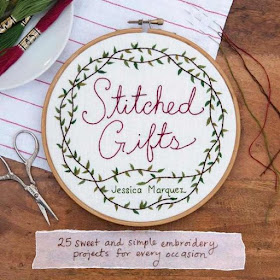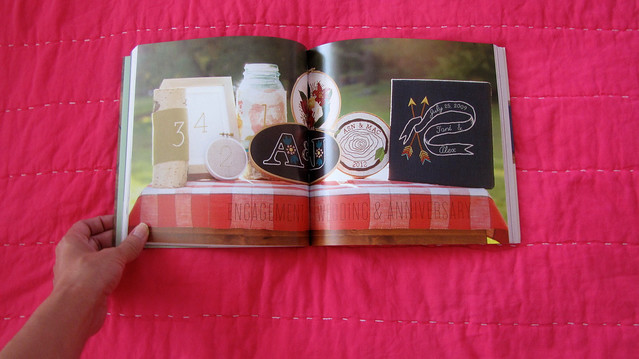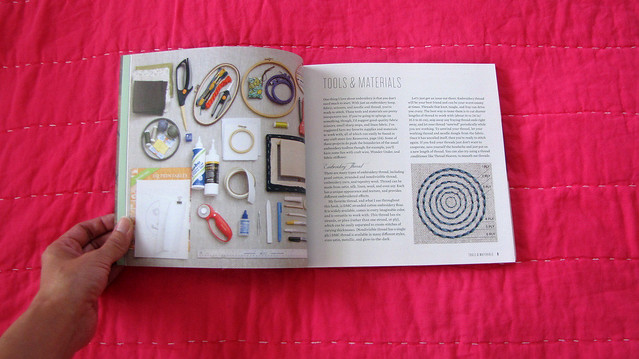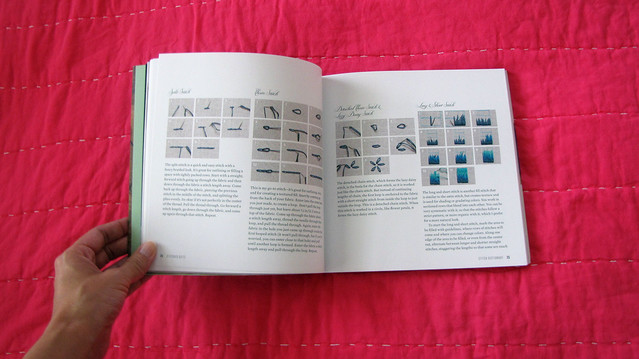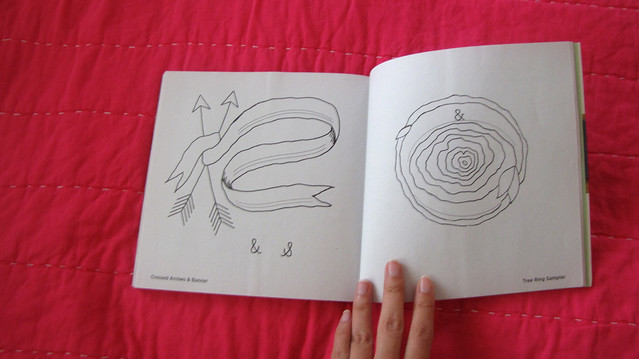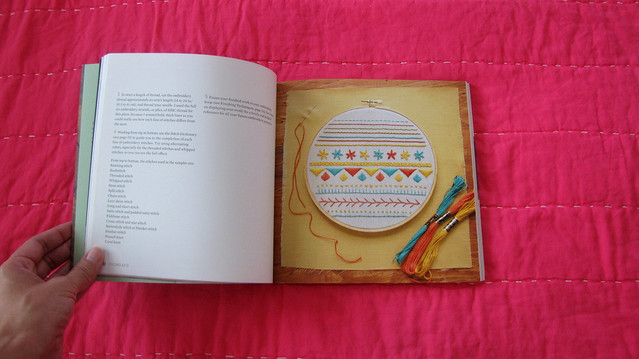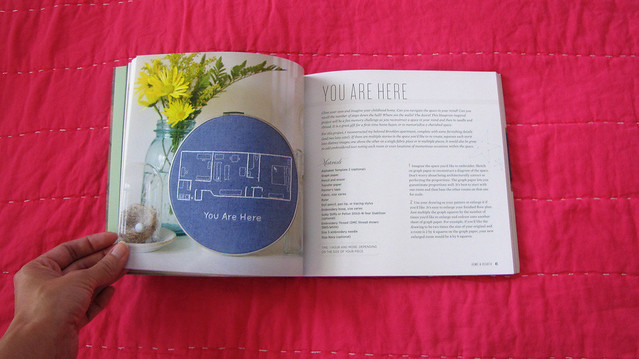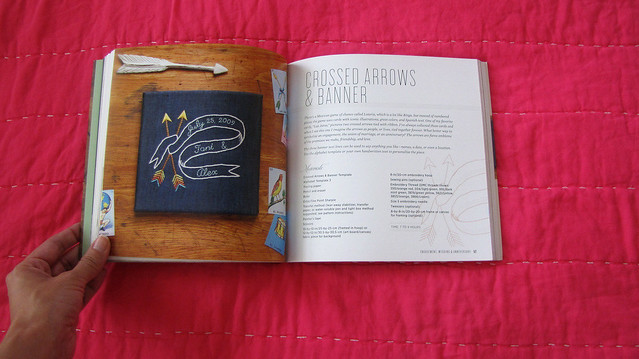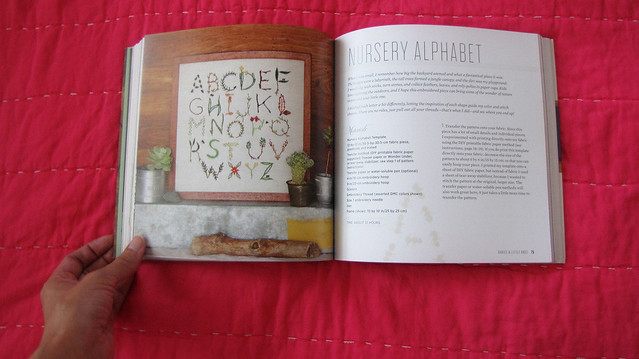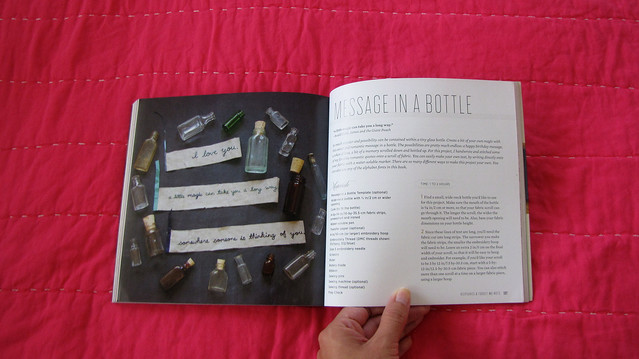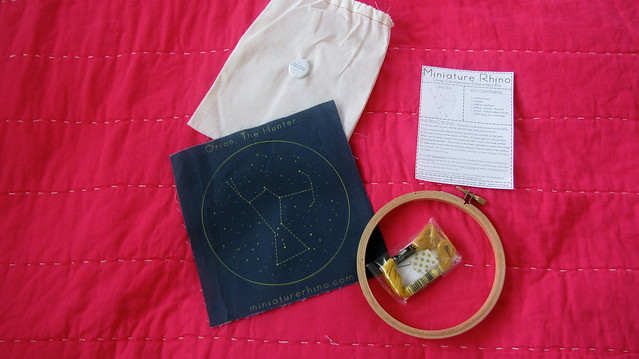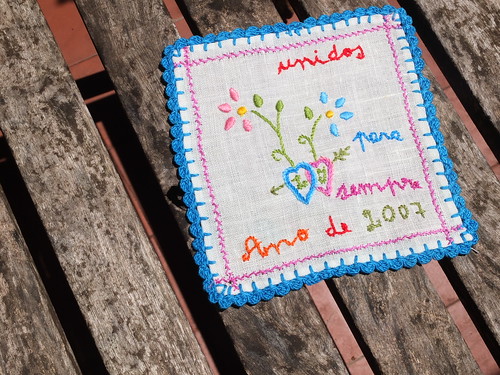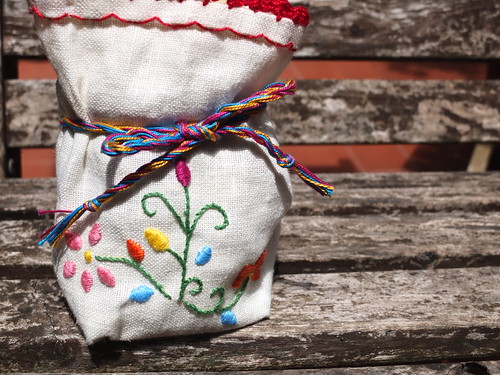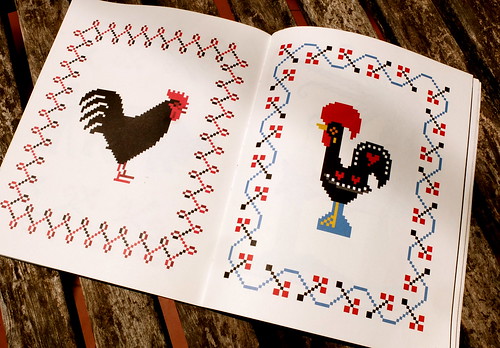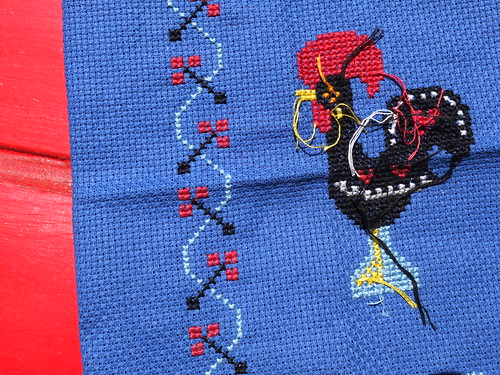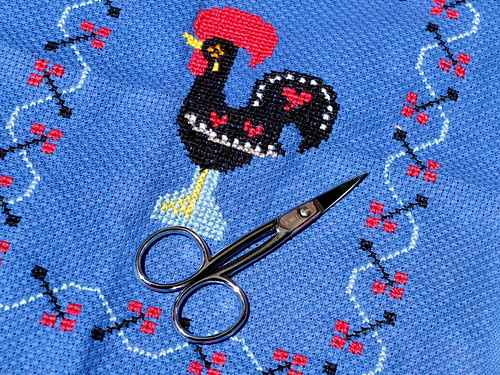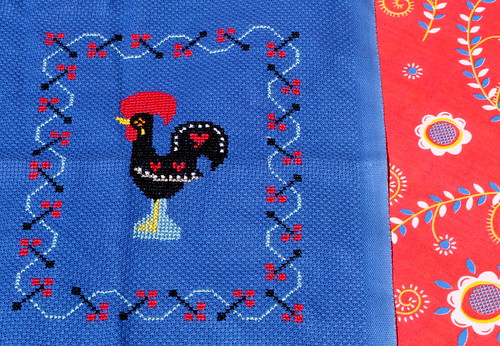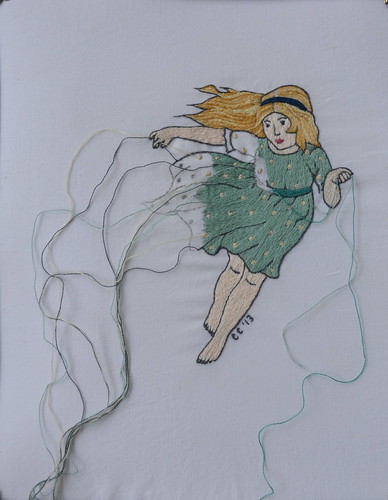Happy Tuesday, everyone! We are in the full throes of summer here in Southern Arizona, and sometimes the only reprieve comes in the form of cocktails on the patio while enjoying friendly company. It seems everyone is hosting a get-together this summer, and since my Mom always told me to never go to a party empty-handed, I decided an embroidered wine tote would be a great hostess gift for the occasion.
I have been wanting to use this burlesque fan dancer embroidery pattern from Jenny Hart's, Embroidered Effects book for some time, and why not add her to a wine tote as a flirty hostess or host gift? Sounds good to me. I also thought a monogrammed tote would be great for this project, as well, but I'll do that for the next party.
To make a wine tote you will need the following supplies:
- two pieces of fabric for the exterior cut to 8x14-inches
- two pieces of fabric for the interior cut to 8x14-inches
- two pieces of batting cut to 8x14-inches
- one piece of fabric cut to 4x21 inches for the strap
- embroidery pattern
- embroidery supplies (floss, scissors, needles)
- sewing machine and coordinating thread
- scissors
- iron and ironing board
Step One: Transfer your embroidery pattern to one exterior piece of fabric and stitch.
Step Three: Create a square flat bottom for the bag by taking the bottom corner seams and and pressing them flat against one another. Sew 2-inches down from the point. Clip the excess fabric and repeat on opposite corner.
Step Four: Assemble the lining of the bag by placing the two lining pieces right sides together. Mark a 2-inch space to leave unsewn, this will be used to flip the bag inside out later. Sew around the three sides using a 1/4-inch seam allowance, leaving the top open. Make sure to leave your marked space open, as well.
Step Five: Square off the corners of the lining as you did in Step Three for the tote exterior.
Step Six: To assemble the strap, take the 4x21-inch piece of fabric, fold it in half, and press.
Unfold, and press the outer edges in toward the center crease you just created.
Fold in half again and press.
Top stitch on either side of the strap.
Step Seven: Take the strap, align each edge on the center of each side seam of the tote, and pin in place.
Step Eight: Take the lining of the tote and place it inside of the exterior piece, with right sides together. Pin it in place, making sure to keep the straps aligned along the side seams. Stitch along the top using a 1/2-inch seam allowance.
Step Nine: Flip the tote through the opening in the lining and stitch shut. I like to run this through the sewing machine, but it can be hand sewn with a slip stitch if you like.
Step Ten: Top stitch around the top edge.
Step Eleven: Insert bottle and you are ready for the party!
Hope you enjoy and have a great Tuesday!





















